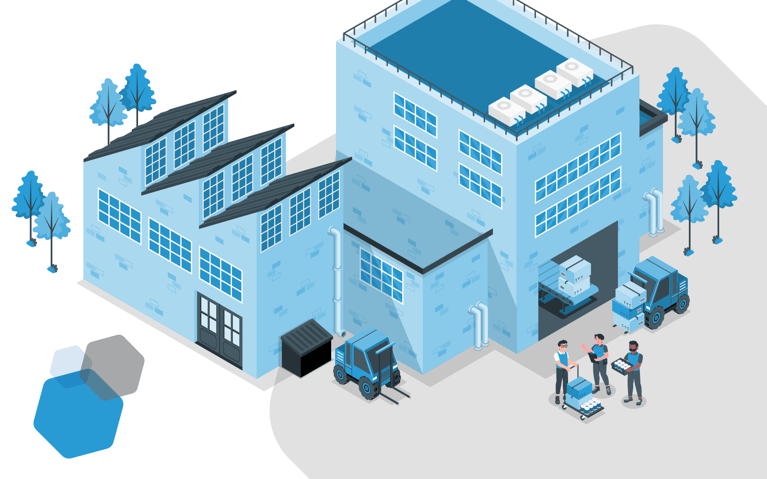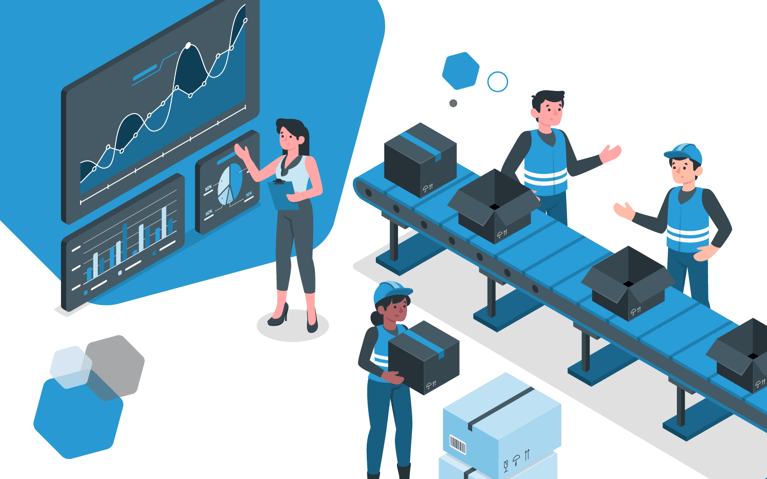Robot-Forward Warehousing: Merging Automation with 3PL for Labor Efficiency
As the landscape of B2B commerce continually evolves, the adoption of cutting-edge solutions in fulfillment and logistics becomes even more important. A prime example of this transformation is the rise of robot-forward warehouses.
The Genesis of Warehouse Robotics
The shift towards automation in warehouses, particularly in the world of third-party logistics (3PL), is not a mere coincidence. The inception of platforms like WHSErobotics.com marked the industry's acknowledgment of the immense potential of robotics, emphasizing not just the sale but the enablement of robots within the warehousing space. The idea for this space was to create a website for anything related to robotics in the warehouse space – there was a need in the industry where people could talk about robotics, but there was no thought leadership or enablement of robotics in the warehouse space at the time.
So, what propelled this drive toward automation? The predominant challenge has been the consistent labor availability issues. Fluctuating labor pools, especially in roles like picker, and truck unloading, presented staffing obstacles that automation now addresses.
The Tangible Benefits: Efficiency, Cost, Scalability
What do businesses stand to gain from the adoption of robot-forward warehousing? First and foremost is the prospect of cost savings. Redirecting funds from manual labor to automated systems promises not only cost-effectiveness but also the redeployment of the human workforce to more complex roles, such as maintenance.
The transformative power of automation is evident in numerous case studies. Warehouses that previously grappled with operational inefficiencies have reported substantial improvements upon integrating robotic systems.
For example:
- An e-commerce warehouse saw picking units per hour (UPH) increase from 60 UPH to 150 UPH by using pick assist autonomous mobile robots (AMR).
- A leading D2C retailer saw picking UPH increase by 400% by using goods-to-person robots.
- An aftermarket distributor for automotive parts saw a 4X increase in picking and putaway efficiency, 5X increase in expansion capacity, and 4X increase in throughput.
Warehouse Maturity Curve
What are the stages of warehouse maturity and when is it time to call in the robots? We’ve mapped them out below:
1. Initial Stage: Manual MasteryIn this stage, warehouses often grapple with the challenge of establishing the most basic warehouse functionality.
- Manual processes such as paper-based recordkeeping and manual inventory tracking dominate.
- High error rates and modest productivity levels are common, which can lead to inefficiencies and operational limitations.
Progressing to this stage marks a significant stride towards operational efficiency.
- Basic software automation is introduced, typically starting with Inventory Management Systems (IMS) and simple order management software.
- Process standardization begins, bringing about more consistent workflows and reduced errors.
- Visibility into inventory levels and order fulfillment status improves, laying the foundation for enhanced productivity.
This stage signifies a transformation in warehouse operations, guided by meticulous process refinement.
- Technology, including Warehouse Management Systems (WMS), takes on a pivotal role in enhancing efficiency and accuracy.
- Real-time inventory tracking becomes standard practice, providing a more accurate view of stock levels and order status.
- At this juncture, physical automation, like conveyor systems, starts to play a role in optimizing material flow, further enhancing operational efficiency.
Warehouses entering this stage have reached a level of operational maturity that allows them to respond swiftly to changes in demand and market dynamics.
- A robust WMS, coupled with data analytics, fuels decision-making and process optimization.
- Efficiency and accuracy reach new heights, translating into improved service levels for customers.
- It's at this point that more sophisticated physical automation, such as autonomous robots, is integrated to address various warehousing tasks, contributing to agility and responsiveness.
This stage represents the warehouse's attainment of operational excellence.
- Advanced automation technologies, including Artificial Intelligence (AI), Machine Learning (ML), and smart robotics, are fully harnessed.
- Automation not only drives efficiency and accuracy but also enables predictive and prescriptive analytics.
- Smart robots become integral to inventory management, order fulfillment, and even predictive maintenance, delivering a high level of optimization and responsiveness.
By the culmination of this journey, businesses aren't just adhering to industry standards – they are pioneering them. For entities within the 3PL realm, embracing automation signifies more than enhanced operations; it translates to long-term customer satisfaction.
In today's fast-paced world where efficiency means everything in 3PL services, the interplay of automation technologies and robust core competencies is what will differentiate businesses. From optimizing pick and pack processes, honing supply chain management, to ensuring cost-efficient operations, the future is robot-forward.
Subscribe to our emails for the latest industry insights!
By entering your email, you agree to receive marketing emails from Cart.com





